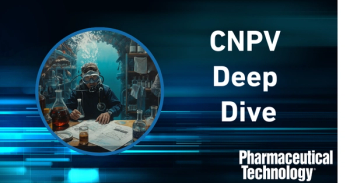
Ionic Pill Could Replace Daily Injections for Diabetics
A new oral delivery method developed by the Harvard John A. Paulson School of Engineering and Applied Sciences could change the way diabetics regulate blood sugar levels.
Researchers at the Harvard John A. Paulson School of Engineering and Applied Sciences (SEAS) have developed an oral delivery method that could change the way diabetics keep their blood sugar levels in check.
The
“[M]any people fail to adhere to that regimen due to pain, phobia of needles, and the interference with normal activities,” said Samir Mitragotri, senior author of the study, Hiller professor of Bioengineering and Hansjorg Wyss professor of Biologically Inspired Engineering at SEAS, in a university press statement. “The consequences of the resulting poor glycemic control can lead to serious health complications.”
Scientists have struggled to develop an oral delivery method for insulin because the protein does not stay intact when it encounters the stomach’s acidic environment and it is poorly absorbed out of the intestine. The new approach carries insulin in an ionic liquid comprised of choline and geranic acid. Next, the ionic liquid is put inside a capsule with an acid-resistant enteric coating. According to SEAS, the formulation is biocompatible, easy to manufacture, and can be stored for up to two months at room temperature without degrading, which is longer than some injectable insulin products currently on the market.
“Once ingested, insulin must navigate a challenging obstacle course before it can be effectively absorbed into the bloodstream,” said Mitragotri. “Our approach is like a Swiss Army knife, where one pill has tools for addressing each of the obstacles that are encountered.”
By encapsulating the insulin-ionic liquid formulation in an enteric coating, the team overcame the first obstacle-resisting breakdown by gastric acids in the gut. This polymer coating dissolves when it reaches a more alkaline environment in the small intestine; that environment is where the ionic liquid carrying insulin is released.
“When a protein molecule such as insulin enters the intestine, there are many enzymes whose function is to degrade the proteins into smaller amino acids,” explained Amrita Banerjee, first author of the study who conducted the research while working as a postdoctoral fellow in Mitragotri's lab, in a university press release. “But the ionic liquid-borne insulin remains stable.”
The study found that the choline-geranic acid formulation was also adept at penetrating two final barriers-the layer of mucus lining the intestine and the tight cell junctions of the intestine wall, through which large-molecule drugs such as insulin cannot easily pass.
According to SEAS, other researchers have tried various means of surmounting these barriers by re-engineering the insulin molecule, coating it in protective polymers, and introducing additives to inhibit breakdown by enzymes or to enhance absorption. However, no oral insulin delivery product is currently available in the clinic. Orally ingested insulin would more closely mimic the way in which a healthy individual’s pancreas makes and delivers insulin to the liver, where up to 80% is extracted and the rest is circulated through the bloodstream. It could also mitigate the adverse effects of taking injections over long period of time, according to the university.
Additionally, the ionic liquid-borne insulin can be prepared in a one-step process that could be readily scaled up for inexpensive industrial production, making the cost of manufacturing the oral formulation easily manageable, as stated by Banerjee.
The researchers plan to conduct more animal tests of the formulation as well as long-term toxicological and bioavailability studies. The team expects that if findings continue to be favorable, gaining approval for eventual clinical trials in humans will be made easier by the fact that the key ingredients in their ionic liquids, choline and geranic acid, are already considered safe. FDA has established a daily recommended dose of
SEAS reports that the approach could potentially be used for oral delivery of other proteins. Harvard’s Office of Technology Development is currently pursuing commercialization opportunities for this technology and is advancing its development through the university’s Blavatnik Biomedical Accelerator program.
Source:
Newsletter
Get the essential updates shaping the future of pharma manufacturing and compliance—subscribe today to Pharmaceutical Technology and never miss a breakthrough.




